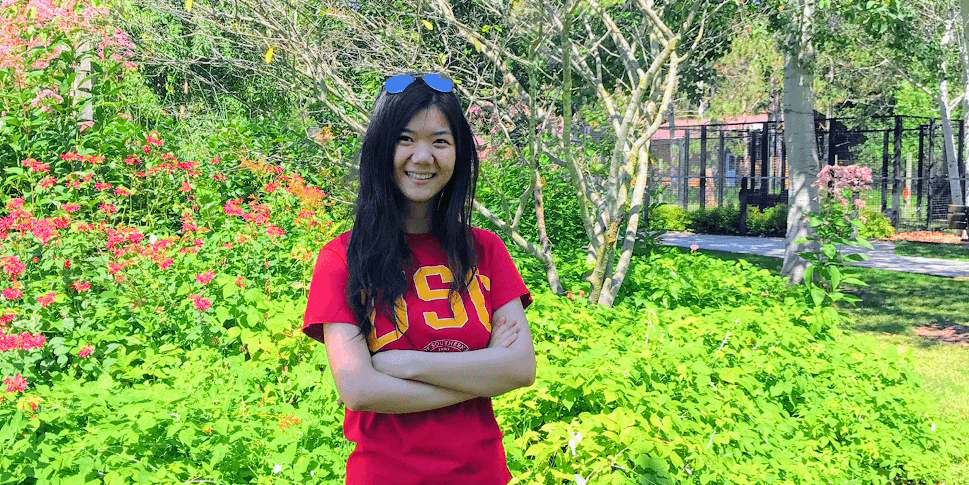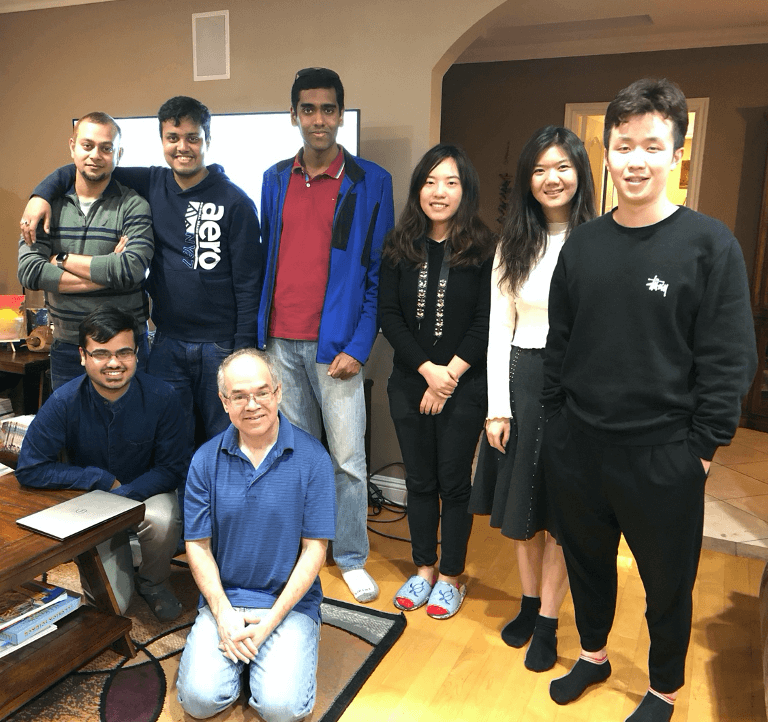
By Dr. Huimei Cheng
I became excited about engineering from the moment I first touched it in as an undergraduate student. Growing up in Jiangsu, China, I loved to imagine myself as a machine and figure out the proper way to write programming. It was this passion and confidence that led me to USC Viterbi. And it was at USC Viterbi that I first met Professor Peter Beerel. I would not be where I am today – a PhD graduate starting a job as a CPU Implementation Engineer with Apple in California – without the experiences I’ve had here. I certainly never imagined I’d help design a novel circuit that may one day change the portable electronics and Internet-of-Things industries.
Like many new Masters students, I took Professor Beerel’s asynchronous circuits class in my second semester. I found him to be extremely knowledgeable, and his class was always full of fun and excitement. I simply had to go deeper into this area. This started with directed research in my third semester. Directed research is a special course at USC Viterbi that gives undergraduate and graduate students the opportunity to work closely with professors and Ph.D. students on more advanced research. Through this experience, I realized not only that I wanted to go for a PhD, but also that I had the ability and support to do so!
Our design greatly improves power consumption to such a degree that we expect it to have a significant impact on the world of portable electronic devices and Internet-of-Things (IoT).
Soon, I was a full-time PhD student working on Very Large-Scale Integration (VLSI). This is the process by which engineers put millions, or even billions, of transistors on a single chip. The work is done at the nano-level and these integrated circuits form the cornerstone of nearly every modern piece of electronics. However, with the ending of Moore’s Law, the market must adapt to a relatively fixed technology base. This has made improvements in VLSI and energy-efficiency more difficult and it is one of the challenges I set out to help solve as a PhD student.
I work in an area called the synchronous domain. These are VLSI devices that have an internal global clock. That means that every computing process has to finish at every cycle of the clock. They have many advantages, but their major weakness is that they are incompatible with highly effective logic gates called latches. Latches have the advantages of high performance and low power consumption. They can also be robust and have high tolerance to process, voltage, and temperature (PVT) variations.
At least, they were incompatible until now! In my dissertation, “Automatic Conversion from Flip-Flop to 3-Phase Latch-Based Designs”, my advisor and I proposed a novel design which allows latches to be used safely on synchronous VLSI circuits. Our design greatly improves power consumption to such a degree that we expect it to have a significant impact on the world of portable electronic devices and Internet-of-Things (IoT). It may seem small (of course, everything in VLSI is small!), but it is actually a major breakthrough. I believe this work will inspire more brilliant ideas in this field.
For future students interested in VLSI or circuit design, I would suggest taking courses such as computer architecture (EE 457), VLSI circuit design (EE 477, EE 577A, EE 577B) testing (EE 658), and verification (EE 580). These courses provide knowledge that can be applied professionally in VLSI fields and also help immensely during interviews. For my fellow USC Viterbi students, I highly suggest Professor Beerel’s classes. He has so much professional experience from his years at Intel and his own start-up. Under his guidance, we can bring what we have learned to practice.
Finally, I want to say that when people think of a PhD, they mostly think of the challenging research. But a PhD challenges you in many other ways too. While conducting my dissertation research, I realized the challenge is often learning how to persuade experts on the importance of our work. During my years of research on this project, I received many discouraging comments. Fortunately, I got much support and help from my advisor. He gave me confidence and always believed our work had value. He explained that creating value is one thing and clarifying that value to decision-makers is another thing. This is an insight I will always keep with me.
Just as importantly, a PhD makes you highly resistant to stress and gives you exceptional problem-solving skills you will use in every aspect of life. If this past year has taught us anything, it is that in life things don’t always work out as we plan. PhD training teaches us how to be a person with a high emotional quotient (EQ) when you are suffering dealing with something difficult. I think this is one of the most important values I gained.

Huimei (second from right) with her advisor Dr. Peter Beerel (front center) and their research group. (Photo courtesy of Huimei Cheng)
To future PhD students or those considering a PhD, I would say please be happy and open-minded! PhD life is hard but it’s also incredibly rewarding. Learn how to balance research, studies and personal life. USC Viterbi provides PhD students with so many course options you might be interested in, countless directions for your research to go in, lots of activities, and a strong and welcoming community for everyone. Again, enjoy this wonderful moment in your life.
Huimei defended her dissertation, “Automatic Conversion from Flip-Flop to 3-Phase Latch-Based Designs”, last month. She graduated from the Ming Hsieh Department of Electrical and Computer Engineering, where she conducted research in Professor Peter Beerel's Asynchronous CAD/VLSI Group. This month, she will begin working as a CPU Implementation Engineer with Apple in California.
Published on August 31st, 2020
Last updated on August 31st, 2020

